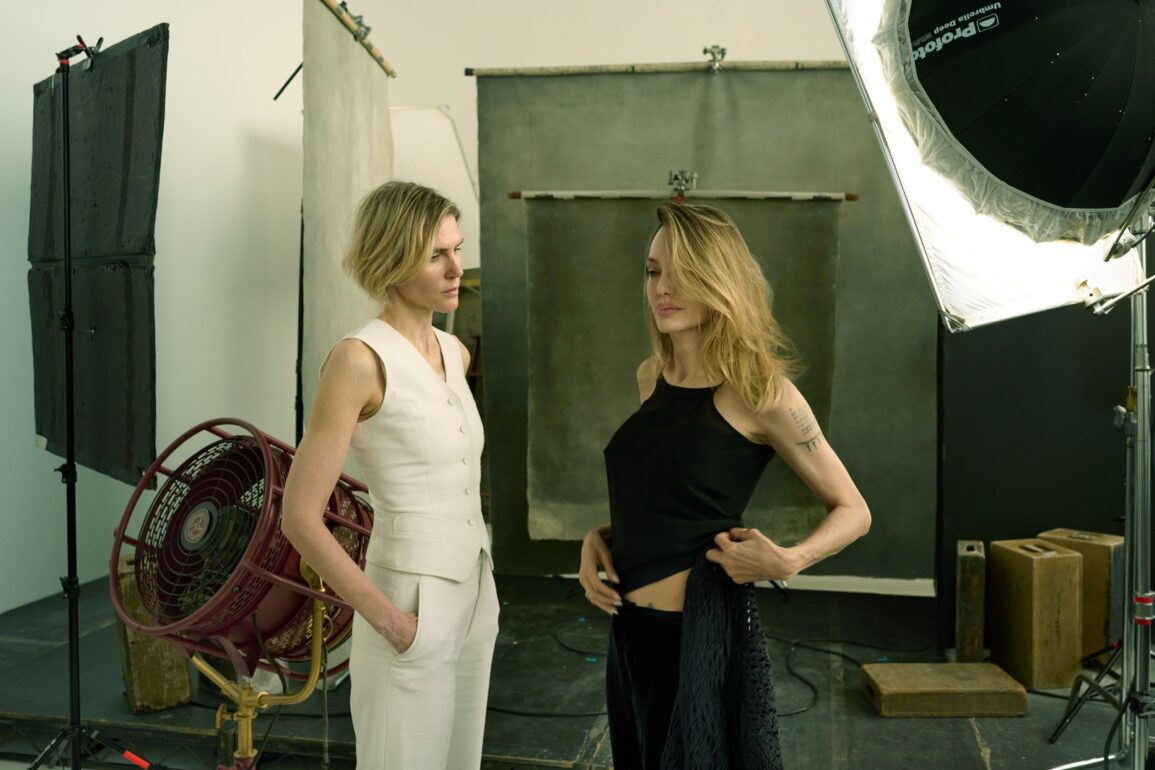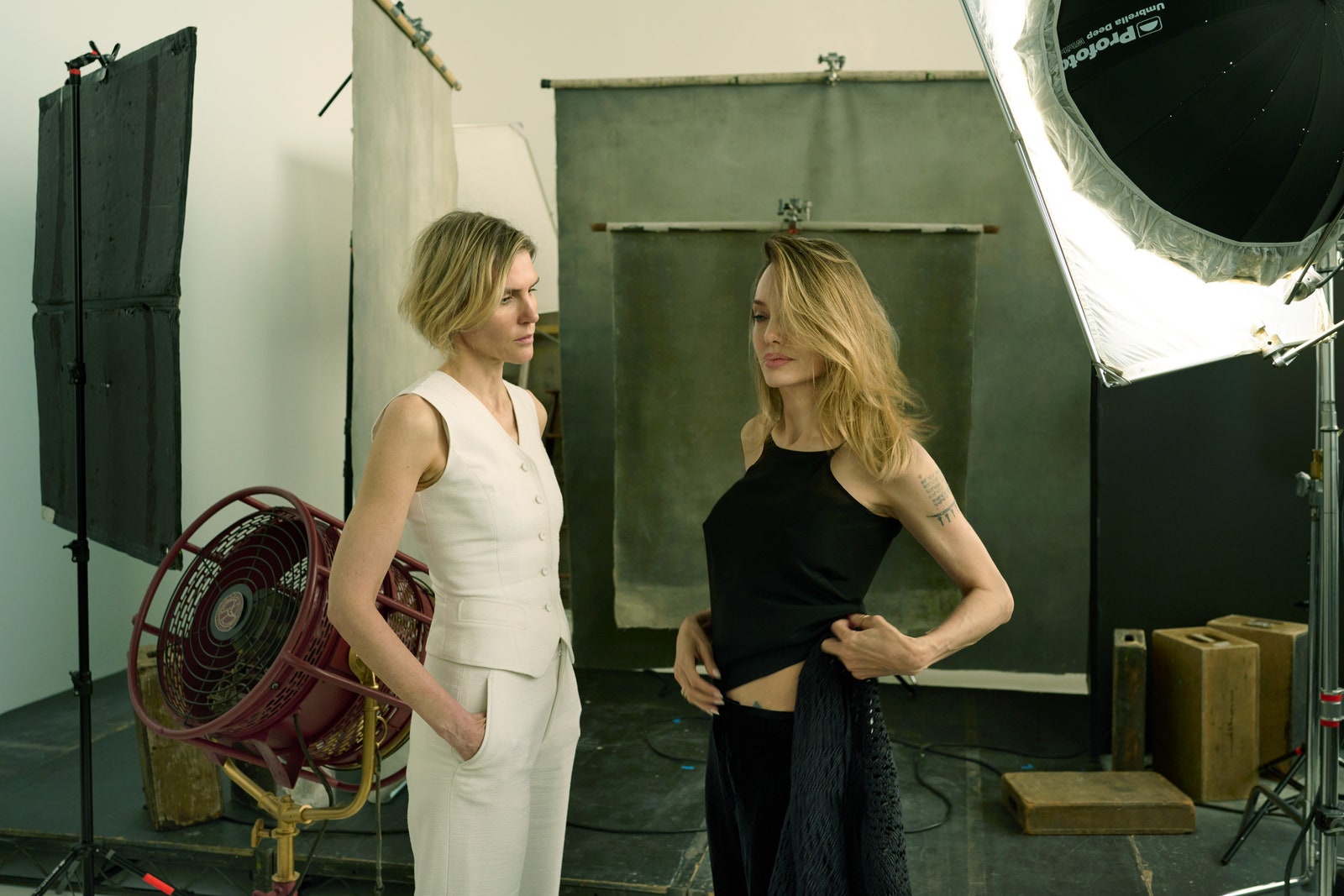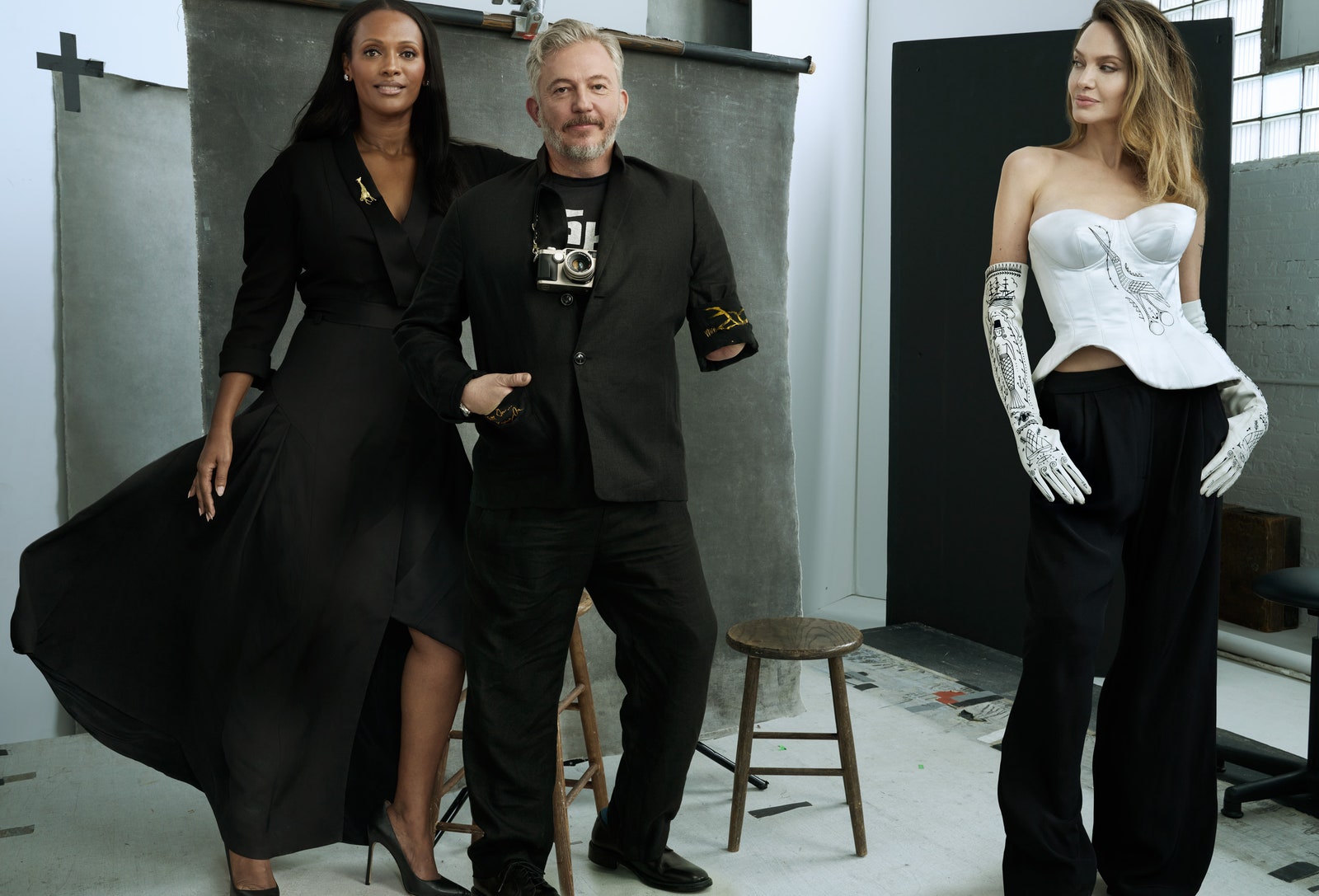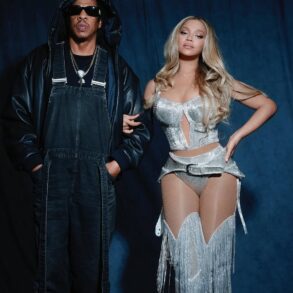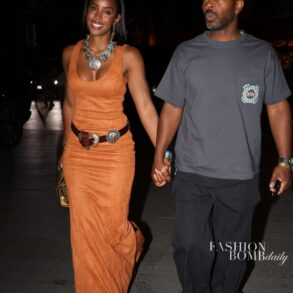Among downtown New York art aficionados, 57 Great Jones Street is something of a sacred site. Andy Warhol bought the two-story building in 1970, famously renting the second floor to his friend Jean-Michel Basquiat a decade later, shortly after they met. And now, with the façade almost completely covered in graffiti, it seems as if every street artist within a 30-mile radius has paid homage. “Perhaps we can do something with all the art,” says Angelina Jolie, peering out from under her enormous umbrella. It’s a drizzly Sunday morning in mid-July, and she’s fresh off the plane from Italy. Six months ago, she and her eldest daughter, Zahara, 18, a student at Spelman College in Atlanta, stumbled upon this place while hunting for downtown retail spaces. The moment they walked through the door, they knew the search was over. “I can be very impulsive, but Zahara is so grounded, decisive, and thoughtful,” Jolie says. “When she agreed, I felt we were both decided.”
In November, the actor, director, and former UN Refugee Agency Goodwill Ambassador and Special Envoy will open the doors on Atelier Jolie, a somewhat broadly defined effort to bring her globally minded, socially conscious values to the world of fashion. She envisions it as a space of collaboration, a kind of cultural centre-meets-design workshop that combines tailoring and upcycling services with a gallery space for local artisans and a café run in partnership with refugee organisations. “I’ve met a lot of artisans over the years – very capable, talented people – and I’d like to see them grow,” Jolie says as she gives me a tour of the space before the contractors go to work. Her list of collaborators includes the London-based milliner Justin Smith, the American artist Duke Riley, and South African lacemaker Pierre Fouché – but, she says, “it’s not really about fashion.” Nor is Atelier Jolie about her, she is quick to add. “I don’t want to be a big fashion designer. I want to build a house for other people to become that.” Jolie’s goal is to create community, and in that sense, her project breaks the traditional celebrity mould – one that often amplifies the cult of its founder’s personality. Atelier Jolie’s model is perhaps best compared to the Olsen twins’ The Row, where fame doesn’t overshadow the clothes, or undervalue the commitment.
Our tour begins on the second floor, a light-filled loft furnished with high ceilings, exposed rafters, and benches of reclaimed wood where soon a team of tailors will set up shop with deadstock and artisanal fabrics. Jolie herself is modelling a pair of custom woollen grey trousers, one of multiple styles that will be available made to measure; the cost of a custom slip, say, will start around $300, with repair services that begin at $10 for a hand-painted patch. There will also be take-home mending kits and a stud-it-yourself activity station in the café that patrons can use for free.
Though the property has passed through several hands since Basquiat lived here, traces of the prolific artist remain: the graffiti tag SAMO© (pronounced same-oh) – something he coined with his friend Al Diaz – is scrawled on the concrete floor. This morning, Jolie has her own small crew in tow: the brand’s president and chief operating officer, Helen Aboah, and Giles Duley, who is advising the project on corporate impact but started his career as a music photographer, soon evolving into “an angry man with a camera”, he says, with a focus on the impact of conflict on communities around the world. “Over the last 20 years documenting humanitarian stories, I’ve seen the negative impact of Western consumerism on developing countries – from child labour, illegal extraction of minerals, pollution from the dyeing of fabrics, exploitation of farmers, and much more,” he says. “Atelier Jolie can have an incredible positive impact on artisans who have often been unrecognised and undervalued – but we also have an opportunity to start conversations about workforce exploitation, pollution, and waste.” Adds Aboah: “At the top of Angelina’s manifesto is also the idea that we are all creators.”
There are signs that the team is beginning to make its mark: draped over the doorway is a blank canvas stencilled with the Atelier Jolie logo in white spray paint. “That was my son practising,” Jolie says proudly of Pax, 19, who along with Zahara has been heavily involved with Atelier Jolie. As a single mother of six, Jolie considers major endeavours such as this one a project for the entire family, and she turns both expansive and personal on the subject when the conversation turns to her children. “I was 26 when I became a mother,” she tells me. “My entire life changed. Having children saved me – and taught me to be in this world differently. I think, recently, I would’ve gone under in a much darker way had I not wanted to live for them. They’re better than me, because you want your children to be. Of course I’m the mother, and hopefully that safe place for them and that stability. But I’m also the one that they laugh at – and I see them taking over so many different aspects of our family.”
On our way downstairs, she and Duley decide to stage a kind of DIY art experiment: Jolie is swaddled today in one of her signature cream-coloured trench coats – by the sustainable brand Another Tomorrow – but she promptly peels it off in a brightly lit corner of the ground floor studio. “We’re trying to see if we can take photographs of tattoos,” she says, “and turn them into patches – the idea is to make your clothing your own, instead of simply getting rid of it.” She turns her back to Duley’s camera and strips to the waist, revealing her dense lattice of body art. Aboah and I move toward the door, quickly engaging in small talk in an effort to give Jolie privacy. But the movie star in the room seems unfazed.
The tattoos that trace Jolie’s delicate frame include a phrase in Arabic running along her right arm, translating to “strength and hope”, and another in Italian – “still it moves”, a phrase famously attributed to Galileo after his revelatory scientific observations on the solar system landed him in court. “My kids would roll their eyes if they were here,” Jolie says. “I was quite dark when I was young. I was a punk, not the popular kid – going to thrift stores, cutting things up, burning little teeny cigarette holes into things: that was me as a teenager, and I wouldn’t trade it for the world. Maybe that part of me wants to push back.”
This post was originally published on this site be sure to check out more of their content.




